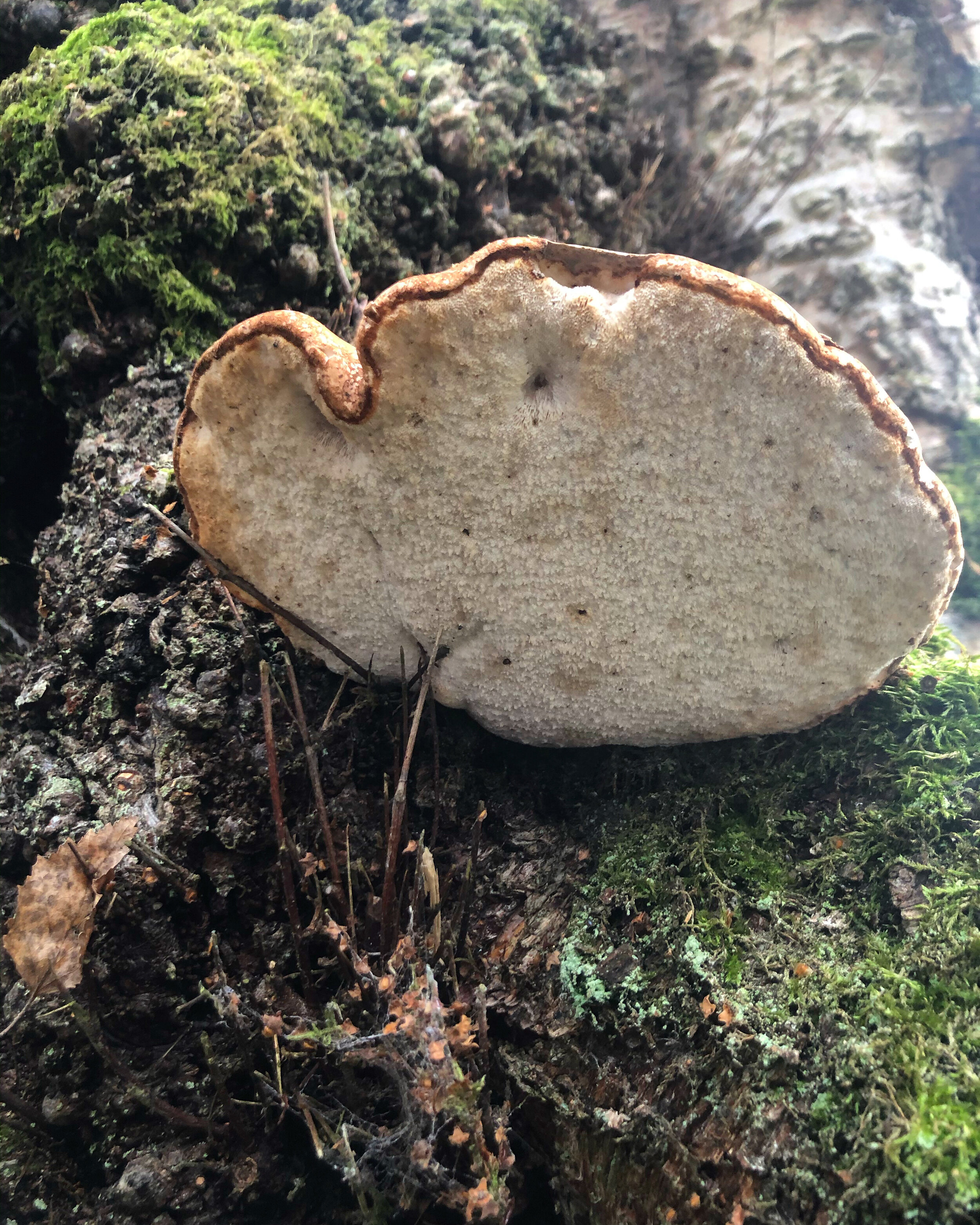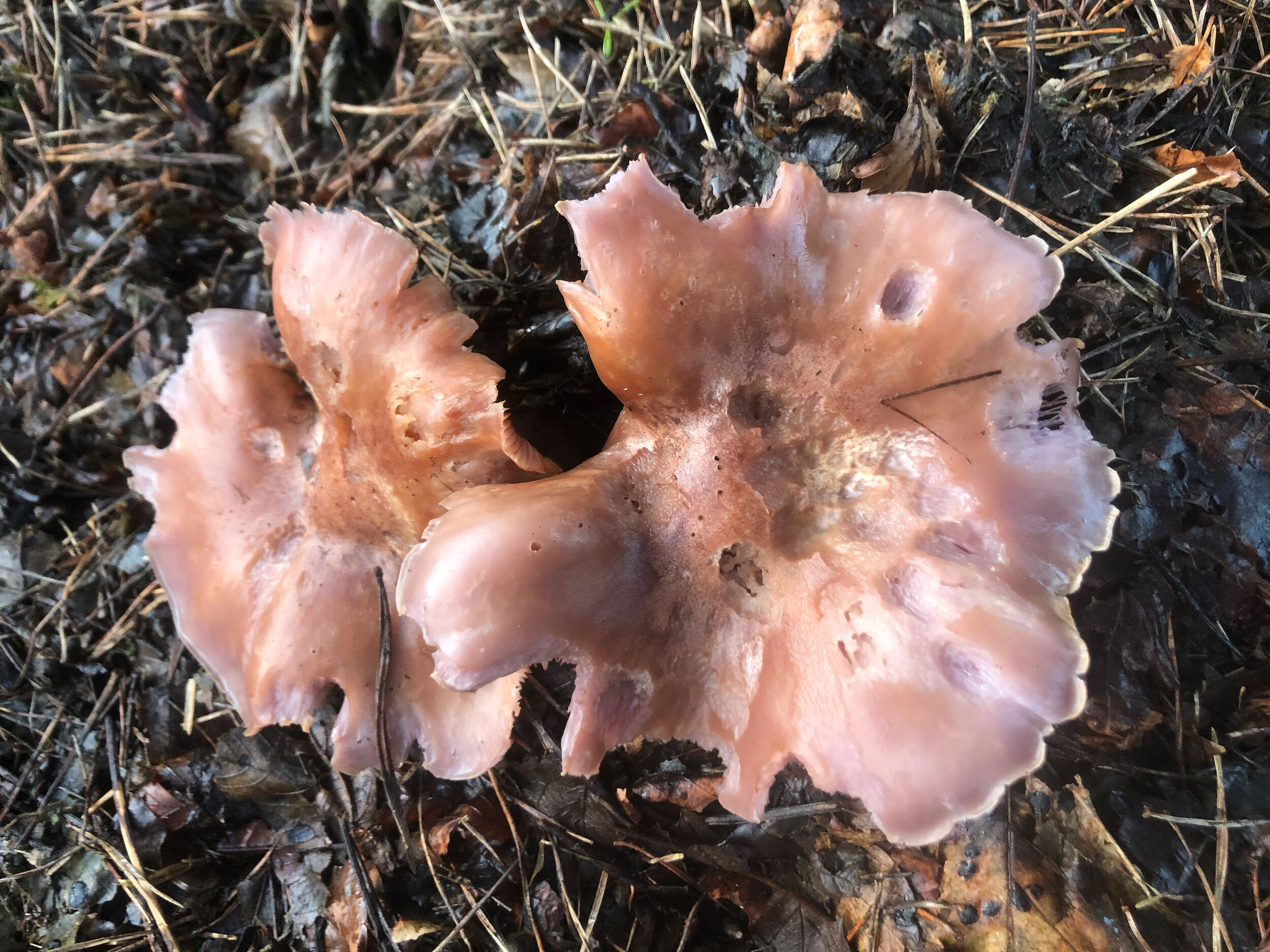Cliché or not, if I had a penny for every time I heard someone say something along the lines of - ‘There isn’t much to see in the winter’, I would indeed be a rich man.
My writings today are to purposefully, with everything that I have, well and truly debunk the myth of winter blandness, lifelessness, monochrome colours, and a general perception amongst some, of it not being worth opening the front door for.
So, what if I was to tell you that a winter’s walk not only has the potential to reveal the folkloric customs of elves and witches, but may also present you with the unusual entities of frozen cat’s tongues and yellow brains?
Dubious?
Understandable, but bear with me.
A riparian corridor. The ideal habitat for Dippers, Otters and decaying deadwood.
The fresh, white hills of Christmas Day in Northumberland.
Cue Christmas Day, and a family walk starting at the Dukesfield Smelt Mill in Northumberland. This is an area now known as a haven for wildlife, and just a few months back I frequented here to listen to and watch the nocturnal enigma that is the Nightjar. Their sound reminds me of some sort of trippy UFO and is not one that can be replicated by any other. If you’ve heard them, you know.
Rewind a couple of hundred years though, and this site was pure industry. In operation from around 1666 until 1835, it was famous for its use of lead ore in the production of lead bars. Thousands of tons of lead ore were transported here by ponies, from the distant lead mines of the North Pennines. From here, the bars of lead were taken to and sold on the banks of the River Tyne. Quite a transformation has occurred since then, but through the aid of a heritage lottery fund, the Dukesfield arches remain beautifully preserved - as seen above.
Following a track past the arches, along a stunning stretch of riparian corridor, the coniferous plantations started to open up and disband as we moved into mixed deciduous wood pasture, displaying some magnificent old oaks and an almost constant river fringe of alders, with their enchanting flushes of purple. Soon, we came to snow-covered open grassland, offering up idyllic Christmas scenery. Aside from the three majestic Buzzards circling above, one thing that really caught my eye here was the profusion of holly berries. They are proving to be a real treat for birds like Fieldfare and Redwings at the moment, so keep your eyes peeled when you’re out next. We also spotted a small flock of Yellowhammers at the field edges. An interesting observation of holly, is that if you look carefully at the differing appearance between the lower and upper leaves. Anything growing above the browsing line of herbivores will be a lot smoother than the leaves below. Holly has developed its own self-defence mechanism through evolution over time.
As we approached further tree cover, I couldn’t help but notice how stunning the frost covered mosses were as they poked out of the snow capped rocks - something which I think many of us will often overlook, myself included. Using a small botany hand lens on such organisms will open up a whole new world of life before your eyes.
Christmas Day Holly (Ilex aquifolium).
Frosty Bryophytes.
After a brief stop in a picturesque spot close to the river for a Christmas Day celebratory tipple, an absolute flurry of fungi was soon to follow. Starting off with the Birch Polypore. This is a common bracket fungus that you can see all year round, growing on dead or weakened birch trees, before it slowly kills them off. It is a mushroom that has been used for many medicinal purposes over the years; as antiseptic, the treatment of flu and yellow fever, and when dried in tea, many swear by its positive effects on the immune system. Its underside has even been used in barber shops, acting as an antiseptic for razorblades!
Birch Polypore (Piptoporus betulinus).
The underside tubes and pores.
Moving on through several plantations and grassland heath, some real bursts of tertiary colour were coming to the fore. Earlier, I mentioned yellow brains, and if you’re relatively lucky at this time of year you will actually see some. They are hard to miss once you get your eye in, and in this case every one of them that I found, was clinging to a gorse bush.
Yellow Brain fungus is a real one. Weird beyond belief, it is yellowy-orange and translucent, often protruding from a fallen branch of gorse, hazel or birch. Rich in folklore, it also goes by the name of ‘Witches Butter’. It is said that if you were to find Witches Butter on the gate or door to your home, you would be put under a witches spell. To release the spell, you would need to poke the fungus with a sharp object, allowing the juices to run out. Perhaps as it is a decomposer fungus that emerges from softwood, then that is the reason it appears so close to home, but try to indulge me, I love a bit of European folklore!
It is worth noting that Yellow Brain fungus (Tremella mesenterica) isn’t the only fungi that is often dubbed Witches Butter, but it is certainly the most colourful, and a wonderful and entertaining find throughout these winter months.
Yellow Brain Fungus (Tremella mesenterica) on a broken gorse branch.
Hazel overcome with ‘Witches Butter’.
In close proximity to the Yellow Brain, just as we wandered back into a pine and sitka spruce block of woodland, I stumbled across an array of mushrooms displaying a similar colour profile.
One of which, in terms of culinary value was an absolutely incredible find. Chanterelle season tends to be over and done with in the UK by the end of December, but thanks to this relatively mild northern winter to date, a few small groups were still hanging on amongst the verdant green mosses of the woodland floor. When you find Chanterelles, it is impossible not to pick a few. Trust me when I say, they are an indisputable gastronomic wonder, and after some quick checks - noting the egg yolk colours and false, decurrent gills (running down the stem) to rule out any confusion with the ‘False Chanterelle’, I couldn’t help a little harvest. If I’m being honest, as positive as I was to have a walk today full of nature’s wonders, I certainly didn’t expect to find True Chanterelles. Not only that, but on a nearby rotting pine stump, I spotted a small group of Velvet Shank mushrooms. A really easily identifiable fungi in December, but such a fantastic colour that brightens up the ground and they can even survive being frozen solid, unlike most other fungi varieties.
The Chanterelle (Cantharellus cibarius).
A stray, frosty Velvet Shank (Flammulina velutipes).
Approaching the final leg of the journey, there were many more variations still to come. Within half an hour, I had glanced at several Candlesnuff fungi, Wrinkled Club, Stump Puffballs, Turkey Tail, Hairy Curtain Crust (which inevitably got a few laughs) and Butter Caps, with the latter popping up regularly in the deciduous leaf litter.
Turkey Tail is another mushroom which is said to have strong medicinal value. It is known to be packed with antioxidants, strengthens the immune system as well as apparently possessing cancer fighting properties. The more I research into plants and fungi, the more I believe that this is where the answer to all our problems lies! It is a relatively common bracket fungus, but look closely and you can really start to appreciate its beauty.
Candlesnuff (Xylaria hypoxylon).
Wrinkled Club (Clavulina rugosa).
Butter Cap (Collybia butyraceae).
The intricate detail of a Turkey Tail (Trametes versicolor).
With all that said, this Christmas Day trudge through some seriously soggy woods was saving the best til last. There was one more gem to unearth amongst the snow, which brings me back full circle in this story.
Frozen cat’s tongues you say? Indeed.
As with many orders of fungi, especially in winter, this strange little organism was found crowning a dead tree stump. Labelled under several common names including - Toothed Jelly, False Hedgehog, and White Jelly mushroom, Pseudohydnum gelatinosum will always be known to me as Cat’s Tongue fungus. Like all fungi with numerous common names, I just tend to pick the one that I like best! At first, I thought it was Jelly Ears, before realising the difference in habitats and colour. Then I noticed the obvious giveaway of this gelatinous growth - the maze of tiny white spines on the underside. Normally they would feel furry, but in this case I had to defrost it in my hand for about 5 minutes to make sure I was getting the full experience (proper nature nerd alert). You’ve just got to love the quirkiness and eccentricity of mother nature sometimes!
Cat’s Tongue fungi (Pseudohydnum gelatinosum).
After dehydrating to preserve them, you can then rehydrate to their original appearance and size.
I have heard that the Cat’s Tongue can be turned into some delicious candied sweets. That though, I am yet to experience, but it is on the to do list.
In just one winter’s amble, I have of course only scratched the surface of what you can actually find in the outdoors just now. I haven’t even touched on the world of invertebrates! In regards to fungi though, disappointingly I wasn’t able to cast my eyes on a Scarlet Elfcup, one of my absolute favourites.
December is a peak time of year to spot them, but on this occasion not so much. In folkloric legend, the elves drink the morning dew from these beaming red cups. It is easy to see why, they really are easy on the eye, and I have seen several on other recent jaunts. They look so out of place in our woodlands, and that is perhaps why I am so fond of them.
Scarlet Elf Cup (Sarcoscypha austriaca).
Just by looking into folk and plant-lore alone, there is so much to dive into this winter. It really does add another dimension to a walk, to look beyond, where you can. The seasons bring with them a wealth of opportunity to marvel in the wonders of the natural world, and hopefully you will now agree that the embrace of winter is undoubtedly one of those opportunities.
Have my ramblings (adjective and noun!) sufficed in quashing the myth of midwinter? Has nature done enough?
The secret’s out.
See you in 2021.




















